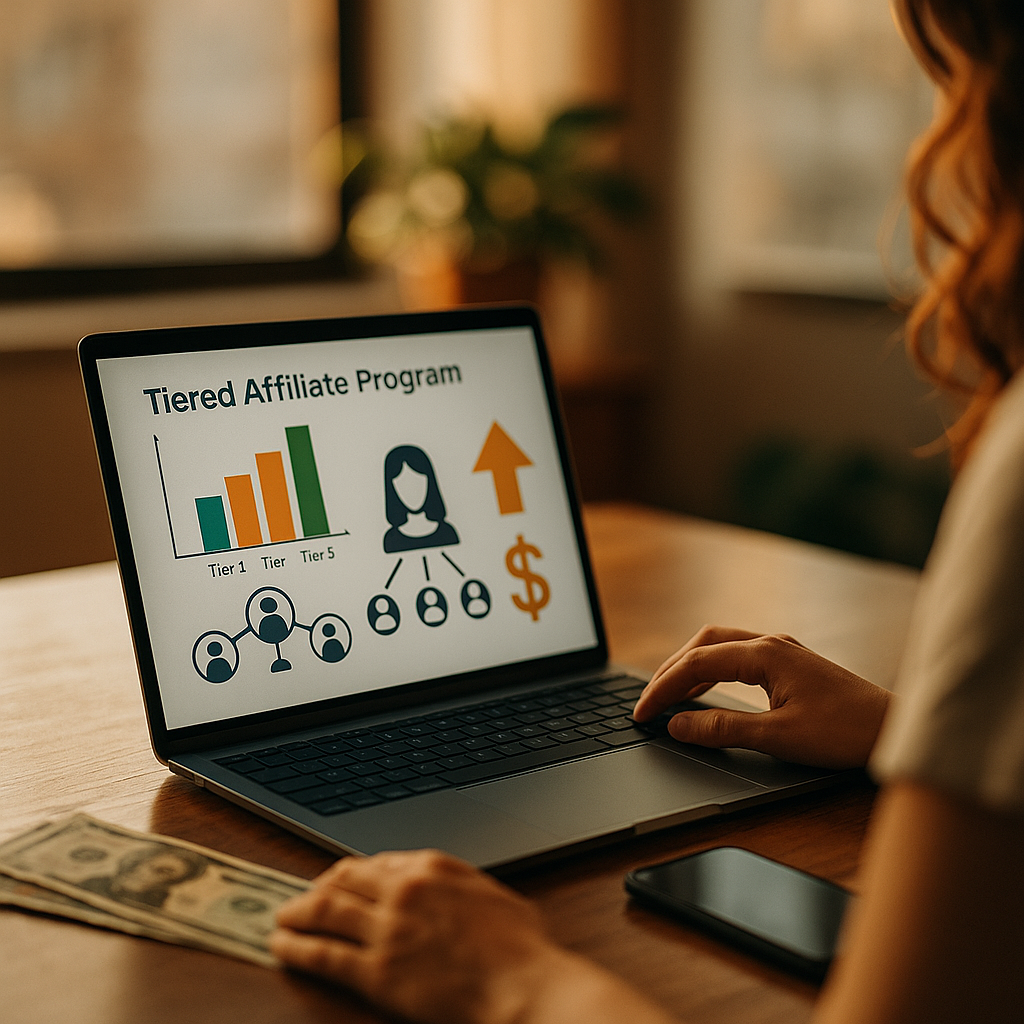Building a successful affiliate program in 2025 requires more than just signing partners; it takes strategy and insight. Learning how to structure a tiered affiliate program based on influencer niche is key to driving targeted sales and long-term growth. Let’s explore proven steps and smart frameworks to engage influencers, optimize conversion, and scale your brand’s online presence like never before.
Understanding the Influencer Affiliate Program Model
An influencer affiliate program leverages content creators with niche followings to promote products in exchange for commissions. Traditionally, all partners received equal incentives—but that no longer suffices. In today’s landscape, influencers’ reach and relevance vary greatly. Segmenting your incentives with tiered structures ensures fair rewards, fosters motivation, and aligns influencer efforts directly with your business goals.
According to Influencer Marketing Hub’s 2025 Benchmark Report, companies utilizing tailored affiliate programs saw a 38% higher average ROI than those with a flat model. The driving force? Rewarding valuable partners by their influence and fit. For brands, that means balancing effort with value while keeping your top performers committed.
Segmenting Influencers by Niche and Potential
The backbone of a tiered affiliate program is segmenting your influencer base effectively. Categories can include:
- Content Niche: Fashion, tech, wellness, parenting, finance, and more.
- Audience Size: Nano (<10k), micro (10k–100k), macro (100k–1M), mega (1M+).
- Engagement Rate: How loyal and interactive their audiences are.
- Sales Track Record: Past affiliate program performance data, if available.
Why does niche matter? A well-segmented program ensures that skincare products, for example, are championed by beauty influencers—not generalists. This increases trust and lift. Furthermore, using analytics tools—like PartnerStack or Impact—can help quantify and group influencers so you can assign them to appropriate performance tiers.
Designing Your Tiered Affiliate Structure for Maximum Motivation
A tiered commission structure distinguishes top performers and incentivizes all levels of partnership. Here’s a robust way to set up your tiers:
- Tier 1: Entry-Level or Nano & Micro Influencers
- Commission: 8–12% per sale
- Extras: Welcome kits, in-depth product support, early access to campaigns
- Rationale: Lower sales volume but highly targeted audiences
- Tier 2: Growth-Level or Macro Influencers
- Commission: 15–20% per sale
- Bonuses: Performance milestones, featured promotion during big launches
- Rationale: Consistent reach, higher volume conversions
- Tier 3: Power or Mega Influencers
- Commission: 25%+ per sale, custom contracts
- Bonuses: Quarterly bonuses, exclusive product collaborations, first option on sponsored posts
- Rationale: Major exposure, brand status elevation, potentially celebrity influence
Blend niche relevance into each tier’s perks. For example, a wellness macro influencer might receive limited-edition products or access to your nutritional advisory board to strengthen authenticity.
Only promote influencers to higher tiers based on objective results: sales volumes, conversion rates, and campaign engagement. This keeps your system transparent and competitive.
Personalizing Program Benefits by Niche
Customization fosters stronger partnerships—and better results. Here’s how to tailor benefits by influencer niche:
- Fashion Influencers: VIP previews, creator collections, styling contests
- Fitness Influencers: Commission bonuses for seasonal fitness campaigns, co-branded workout challenges
- Tech Influencers: Beta product access, affiliate-only webinars with your engineering team
- Finance Influencers: Early access to new financial tools, joint financial literacy events
This approach deepens trust, encourages creative content, and builds loyalty—ensuring your most aligned influencers go above and beyond mere product mentions.
Tracking Performance and Optimizing Tiers Over Time
Continuous optimization ensures you’re rewarding influencers fairly and maximizing ROI. In 2025, best-in-class programs leverage real-time analytics to:
- Review sales attribution by influencer and campaign
- Monitor audience demographic fit for each influencer
- Highlight content that drives the most value, not just reach
- Adjust tiers dynamically based on quarterly results
An effective affiliate dashboard allows you to automate tier upgrades or downgrades. Be transparent with influencers: communicate what metrics drive promotions, and offer regular feedback sessions to keep them engaged and performing optimally.
Legal Compliance and Best Practices in Influencer Affiliate Programs
As affiliate marketing matures, so do regulatory standards. In 2025, the FTC and international regulators expect full transparency in all sponsored and affiliate content. Brands should:
- Mandate clear ad disclosures and audit influencer posts for compliance
- Provide training or toolkits on compliant content creation
- Ensure GDPR, CCPA, and other privacy requirements are upheld in all affiliate agreements
Legal compliance protects your reputation and the future of your affiliate program. It also demonstrates your commitment to ethical partnerships, making your brand more attractive to discerning influencers.
FAQs: Structuring a Tiered Affiliate Program for Influencer Niches
-
What are the main benefits of a tiered affiliate program?
Tiered programs motivate influencers by rewarding performance, driving higher ROI and loyalty. Brands can also tailor incentives to niche expertise, increasing authentic engagement and conversion rates.
-
How often should influencer tiers be updated?
Review tiers quarterly based on performance data. Dynamic tier adjustments keep the program fair, transparent, and aspirational for all partners.
-
What if an influencer’s niche changes?
Monitor content trends regularly. If an influencer shifts their focus, re-evaluate their fit and consider moving them to a more appropriate segment or renegotiating terms.
-
How do I enforce compliance with disclosure regulations?
Establish clear guidelines and monitor influencer posts. Provide compliant templates and resources, and audit content routinely for FTC and international regulation adherence.
-
Can small brands benefit from niche tiered affiliate structures?
Absolutely. Customizing commissions and perks—even on a smaller scale—ensures your limited resources are invested in the most relevant, motivated partners for your niche market.
Structuring a tiered affiliate program based on influencer niche is an investment in long-term growth, deeper engagement, and outstanding ROI. By segmenting, incentivizing, and optimizing with transparency and care, brands empower authentic partnerships that continually outperform the competition.
